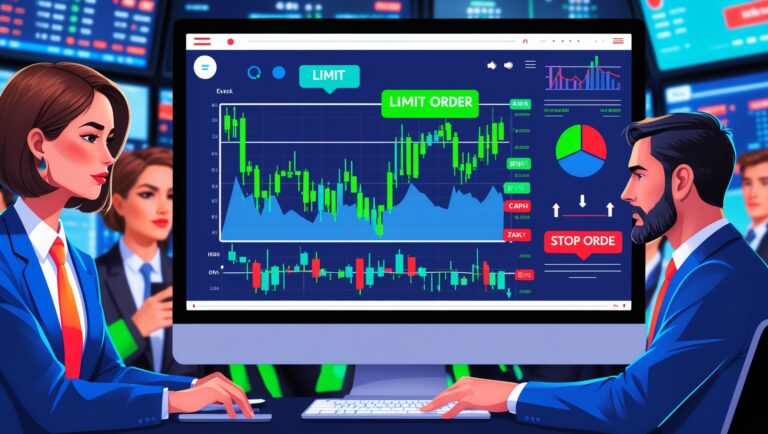What Traders Get Wrong About Market Open Volatility
What Traders Get Wrong About Market Open Volatility
Market Open Isn’t Just Noise — It’s Opportunity (If You Know What You’re Doing)
When I first started trading, I used to panic during the first 5 minutes of the market open. Stocks were jumping all over the place, price action was fast, and I thought I had to act immediately. That urgency led me to overtrade, enter bad setups, and lose money before 9:35AM. Looking back, I misunderstood what market open volatility really is.
The market open is one of the most active times of the day, but high volume doesn’t automatically mean high opportunity. What many traders get wrong is thinking that speed equals clarity. The truth is, volatility at open is mostly liquidity finding direction, not clear trends forming.

Table of Contents
Why Chasing Early Moves Is a Trap
The biggest mistake I made was chasing the first breakout I saw, assuming that because it moved fast, it must be “the one.” More often than not, those trades failed within minutes. What I learned the hard way is that early price action is often a trap, especially for beginners.
A fast-moving stock right at the bell might be reacting to pre-market hype, news, or gap fills. But if you don’t wait for a clear level break and confirmation, you’re just gambling. I used to enter out of fear of missing out—and I paid for it.
What I Do Now Instead of Jumping In
Now, I let the market open breathe. I wait at least 5 to 10 minutes before even thinking about entering a trade. I observe volume, price direction, and whether a stock is holding key levels I marked in pre-market. My goal isn’t to catch the first move — it’s to catch the right one.
This approach saved my account. I realized I don’t have to trade the open to be successful. I just need to be consistent with my edge, and that edge works better once the dust settles and the direction is clear.
My Pre-Market Prep Is the Real Edge
Before the bell rings, I already know which 6 stocks I’m watching, why I like them, and what I want to see happen before I take a trade. That clarity lets me stay calm while other traders panic. My confidence comes from my preparation, not the chaos of open.
This kind of planning is exactly what I teach in my ebook — the same setups and habits that help me pay my bills with trading every single month.
👉 Download the ebook here
Why Waiting Is a Power Move
Market open volatility is not something to fear, but something to respect. The best traders aren’t the fastest—they’re the most patient. I had to unlearn the idea that fast moves equal fast money. Once I learned to wait for confirmation, everything changed.
If you’re struggling with losses in the first 10 minutes, it’s probably not your strategy—it’s your timing. Discipline is more profitable than speed in this game.
Another lesson I learned is that not every stock that moves at open is worth trading. Just because a stock has volume doesn’t mean it has clean price action. I started being more selective. I’d rather sit out than force a trade just because it looks exciting. That mindset shift helped me protect my capital.
I also realized that market makers love volatility because it shakes out retail traders like me. They create fake moves, stop hunts, and traps in the first few minutes to collect liquidity. Once I stopped reacting emotionally, I began to see how these patterns repeated day after day.
One of the most powerful changes I made was recording my trades and tracking them. I noticed that most of my losing trades came from impulsive decisions within the first 5 minutes of the open. That data didn’t lie—and it forced me to change how I approached 9:30AM.
Now, I approach the open with calm. I’m watching for volume to align with direction, not just random spikes. I ask myself: Is this move sustainable? Are buyers holding levels? Or is this just noise? That filter alone helped me avoid dozens of bad trades.
I treat the open like a battlefield. Preparation is my armor. I already know what support and resistance levels I care about. I know the float of the stock. I’ve checked for news, earnings, or catalysts. I’m not guessing—I’m confirming.
The thing most traders don’t realize is that discipline at open is a skill, and like any skill, it takes practice. There’s no shame in paper trading the open just to get better at reading it without risking real money. That’s something I did for weeks before building consistency.
Another key element that helped me was focusing on one or two reliable setups. When I was chasing every spike, I didn’t have a strategy—I had a habit of reacting. Once I found a setup that worked for me consistently, I ignored the rest. That simplicity gave me control.
It’s also important to know when not to trade the open at all. Some days, the market is just choppy from the jump. No clean trends, just wicks and traps. Those are the days I sit on my hands. And the crazy part? That patience has made me more money than anything else.
Over time, I learned to trust my own analysis. I don’t need to copy someone else’s alerts or rely on chatroom noise. My confidence comes from seeing the same behaviors play out again and again. That repetition is what builds true skill in trading.
If you’re struggling to stay profitable, I can’t stress this enough: master the open by mastering yourself. Slow down. Let the chart come to you. Be willing to miss a move to protect your capital. That’s how you last in this game.
These habits I’ve developed didn’t come from a $1,000 course. They came from trial, error, and sticking to a simple plan. If you want to learn more about my daily trading routine and the exact strategy that helped me start paying bills with stocks, you can grab my full ebook here:
👉 Download it now
Volatility is a gift—but only if you know how to handle it. I’m proof that you don’t need to be fast—you just need to be smart.

Stay ahead in the stock market! Subscribe to our newsletter and receive exclusive stock flow reports, trading insights, and actionable tips directly in your inbox. Join thousands of traders who get our updates first.







